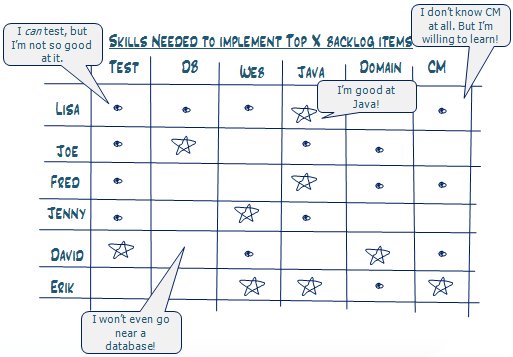“Cross-functional team doesn’t mean everybody has to know everything – this seems to be a common misinterpretation though. Cross-functional just means that the team as a whole has all skills needed to build the product, and that each team member is willing to do more than just their own thing.”
(my emphasis)
star map – interesting tool from Henrik Kniberg: Is your team cross-functional enough…
do this excercise against your top backlog items.
….
I like this exercise because:
- It’s quick & easy.
- It triggers valuable discussions.
- It helps visualize the team’s strengths and weaknesses.
- It encourages teamwork (“how can we help each other succeed”)
- It counteracts pidgeon-holing (attitudes such as “I’m the Java guy and you’re the DB guy, so the DB stuff is your job!”).
- It helps people get to know each other better.
- It takes into account the fact that people can (and often like to) broaden their skills.
